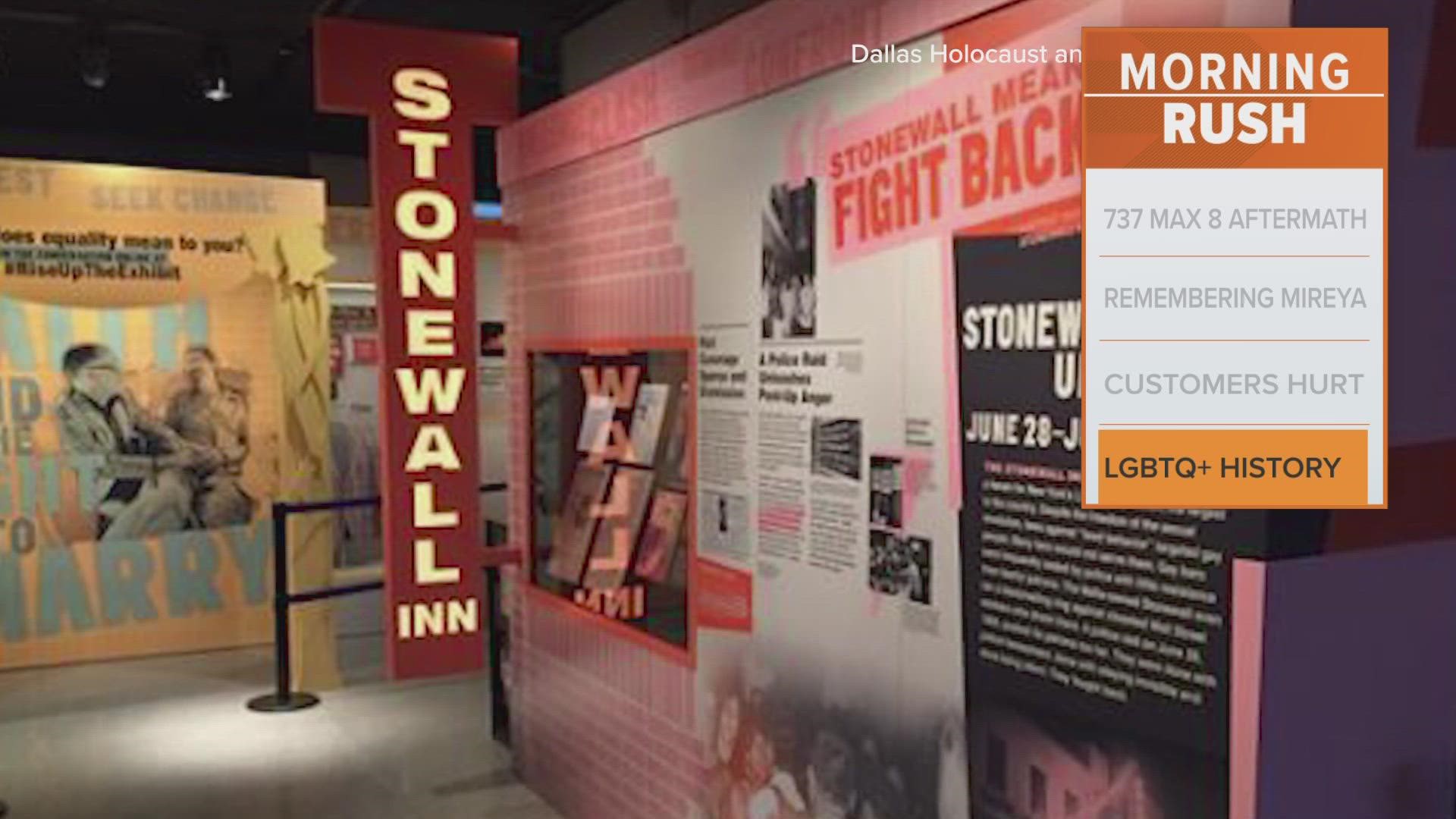DALLAS — After a three-year delay due to COVID-19, a special exhibition is now open at the Dallas Holocaust and Human Rights Museum (DHHRM).
The museum opened a six-month-long exhibition called "Rise Up: Stonewall and the LGBTQ Rights Movement." It not only highlights the 50th anniversary of the Stonewall Riots, but also the LGBTQ+ history before and after the riots.
While the DHHRM's "Pivot to America" wing covers LGBTQ+ history, its president and CEO Mary Pat Higgins said "Rise Up" gives a wider perspective of the movement as a whole.
"It really has so much more content than we can cover in that space," she said. "[There are] three films, there are 85 artifacts. [There are] some really cool interactives. There’s something for everyone.”
Higgins also said the LGBTQ movement is important for everyone to learn about since it's a part of U.S. history and it's still ongoing.
“The ‘Rise Up’ exhibit covers American history that is in our lifetime," she said. "It goes through 2015, so it almost doesn’t matter how old you are. You’ve seen part of this history.”
The museum hosted its grand opening of "Rise Up" on Thursday, giving guests a chance to walk through the exhibition and hear two figures who have been activists since Stonewall.
Karla Jay and Mark Segal got involved in a lot of organizations shortly after the riot. They were co-founders of the Gay Liberation Front. Jay joined groups like the Radcialesbians, and Segal founded Gay Youth to support the young queer community.
Segal was also a part of the Stonewall Riots from Night 1 of the six-day protest. He was 18 years old when New York police stormed into the bar that night in June 1969.
During a panel, Segal said officers threw patrons onto the wall, called them every slur imaginable, and took money from some of them.
"I thought, 'We should call the police,'" he told the crowd. "That's when I realized, 'These are the police.'"
Segal said “Rise Up” is one of the greatest LGBTQ+ exhibitions he’s seen in about 50 years. However, the timeline for the exhibition starts in the 1950s, which he said misses earlier highlights in history. That includes figures like Henry Gerber, who founded America's first gay rights organization in the 1920s.
While the Stonewall Riots is arguably the most well-known moment in LGBTQ+ history, Segal said the fight for equality started almost a century prior to that – since 1895.
“You didn’t know that because [LGBTQ+ people] were invisible until 1973,” Segal told WFAA.
That was when he crashed multiple live TV shows to advocate for fair LGBT news coverage. The most notable protest happened on “CBS Evening News with Walter Cronkite,” which can be viewed at the exhibition.
“Up until 1973, we didn’t appear in newspapers, radios, magazines. There was no internet. There was no cable TV,” he said. “There was three major networks… and they forbid gay characters.”


The overall message Segal hopes visitors understand with “Rise Up” is that the LGBTQ+ community is more visible than ever.
After over 50 years of activism through protests and journalism, Segal said visibility is still a priority for the LGBTQ+ movement as the first step towards equality and education.
“The more we become visible, the more people talk about our community. The more they talk about our community, the more they’re no longer afraid of our community. They have an understanding, and they want to work with us to make our whole city better," Segal said. “You want to know about history in general because if you know history, you know how not to repeat."
Museum president Higgins also emphasized the importance of the exhibition, pointing to recent events regarding the LGBT community: “Given the horrific shooting at Club Q in Colorado Springs last year and the rise in legislation that’s really being targeted at the LGBTQ community, this exhibit is more relevant than ever.”

